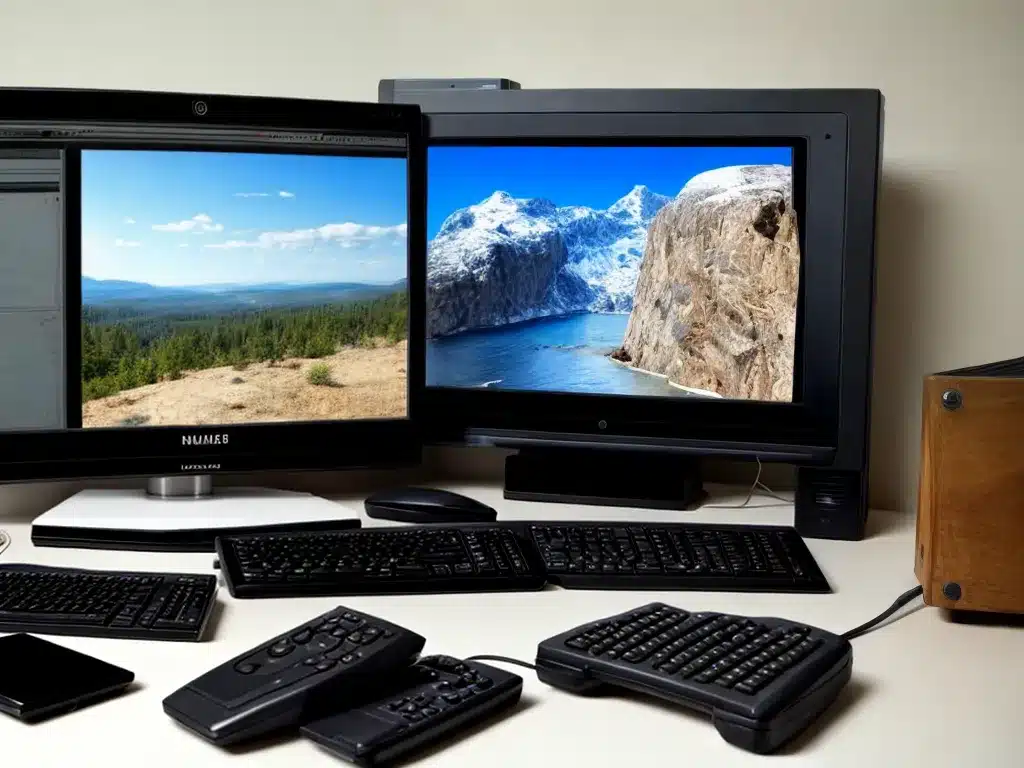
Introduction
Converting an old computer into a home media center can breathe new life into outdated hardware and provide you with a centralized hub for all of your digital media. With some inexpensive upgrades and free software, I can transform my old PC or Mac into a versatile device capable of playing music, videos, podcasts, and more on my television or sound system. Here’s a step-by-step guide to help you convert your old computer into an awesome home media center.
Assess Your Old Computer’s Specs
The first step is taking stock of the old computer’s specifications to ensure it can handle being a media center. Here’s what to look for:
-
Processor: A dual core processor or better is recommended. Look up your computer’s processor to check its specs.
-
RAM: At least 2GB of RAM is ideal, with 4GB being even better to allow multitasking.
-
Hard drive space: Aim for at least 200GB free space for storing media files. An external hard drive can provide more storage.
-
Graphics card: Having a dedicated graphics card is preferable over an integrated one. NVIDIA and AMD cards with at least 512MB of memory work well.
-
Connectivity: Ensure your computer has an HDMI port, WiFi capability, and a sufficient number of USB ports.
As long as your old computer meets those basic requirements, it should work well as a home media hub. If not, consider inexpensive upgrades like adding more RAM or an external hard drive.
Choose and Install Media Center Software
The software is what brings everything together and allows you to access and play your media files. Here are some top options to consider:
-
Plex: Plex is my top choice for its polished interface, vast app support, and abundant features like live TV and DVR. The free version works great.
-
Kodi: Kodi is a popular open source media center software with robust customization options. It’s completely free.
-
Windows Media Center: If you have a Windows PC, the built-in Windows Media Center is a simple option, although development has ended.
-
Pinnacle: Pinnacle offers an intuitive interface and integration with many online services. The Home version is free.
I recommend trying a couple options to see which software’s look, features, and usability you like best. Installation is quick and easy in most cases.
Connect Computer to Television
With the software installed, it’s time to connect your computer to the living room TV to get the full media center experience. Here are a few options to accomplish this:
-
HDMI: Using an HDMI cable is the simplest option if your computer has an HDMI output. This carries both video and audio.
-
Wireless streaming: Devices like the Roku, Amazon Fire Stick and Chromecast plug into the TV’s HDMI port and stream content wirelessly from your computer.
-
AV cables: If your graphics card has composite, component, or S-Video outputs, these cables transmit video to your TV. You’ll also need cables from the audio out port for sound.
Take some time setting up the connection to get the best video quality and stability. Don’t forget to switch the TV input over to the appropriate source.
Add Media Files and Organize Library
Once everything is connected, it’s time for the fun part – adding media! Here are some tips:
-
Music: Rip CDs or transfer MP3s and other audio files into your media center’s music library. iTunes makes transferring libraries easy if you used it.
-
Movies and TV shows: Insert DVDs/Blu-Rays into your computer to rip them for playback later. You can also add digital downloads from services like iTunes.
-
Photos: Import photos from external hard drives, SD cards, and online services like Facebook and Flickr. JPGs work best.
-
Other media: You can add audiobooks, podcasts, home movies, music videos, and more. Supported formats vary by media software.
Take time to properly tag and organize your media so it’s easy to sort and find what you want. The software usually includes tools to update metadata and customize views.
Enhance the Experience
To complete your home media center, consider these enhancements:
-
Remote control: Using a smartphone or dedicated remote makes controlling everything much easier. Media center software usually has great companion apps.
-
Sound system: Hook up external speakers or a soundbar via audio cables or HDMI for better sound than TV speakers. A receiver and surround sound system works even better for immersive audio.
-
Online media: Most media center software connects with online sources like YouTube, Spotify, Netflix, and more to expand your library.
-
VR headset: For a truly immersive viewing experience, connect a VR headset like an Oculus Rift to dive into your media.
-
Game controllers: Add game controllers to turn your center into a retro gaming station by adding emulators. Great for parties!
With those enhancements, your DIY media center will provide endless entertainment options right from your couch. Let your creativity run wild to customize your setup. Then relax and enjoy!












